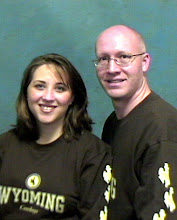It's been a while since I last posted anything in this blog- almost a year. Well, lets catch up a little.
In the spring of 2012 I got a third hive and filled it with a package of Russian hybrid bees. They turned out to be not what I had hoped for. The were very aggressive whenever I worked with them and never even built up enough to add a honey super. That fall I did not feed them and reduced the hive down to just a handful of frames with any honey on them. I assumed they would die out during the winter months. I was going to split one of my other two hives to repopulate the hive the Russians were to have left vacant. To my surprise, they were still going strong the next spring (last year, 2013) and the queen was laying like gangbusters. I decided to get rid of the Russian queen and replace her with an Italian queen I had ordered from a supplier. It looked like all was going well with the new queen when she suddenly disappeared- maybe the Russians ended up rejecting her. In any case the hive ended up dying out before the end of the summer and, of course, I harvested zero honey from that hive. The other two hives, on the other hand, performed well all through last summer and I harvested 25 gallons of honey between the two of them!
So as of right now my little apiary consists of two hives with Italian bees and one hive sitting empty. This spring I plan on splitting whichever of the two is building up the fastest and repopulating the empty hive. I will queen her with an Italian queen I will order from a supplier. If I can get all three hives healthy and producing all summer long, the honey ought to come pouring in!
So here we are in February 2014. It doesn't seem as though our winter has been particularly cold- we did have one stretch of bitter cold back in December but that has been it so far. We here in Wyoming just missed the polar vortex that froze so much of the nation in January. But we have not had any of the winter thaws that we usually get form time to time. It seem like sometime in January I can usually count on some days when the temperature gets up above 40 degrees and I can get some supplemental feed out in the bee hives. That has not happened this year. In fact, we will be down in the negative teens to negative 20 this week. I did take some time to make some bee candy this weekend. I can't put it out in the hives yet, but when the temps allow it I will be ready.
You can find lots of recipes for bee candy on the internet, but here is how I do it:
1. In a large sauce pan or heavy bottomed stock pot add 1 part water to 5 parts sugar and 1/4 teaspoon vinegar for every pound of sugar you use.
2. With a candy thermometer attached to the side of the pan and stirring occasionally, bring the solution to a boil and continue cooking until the syrup reaches 235 degrees (or the soft ball stage- at least that is what it says on our thermometer.) Continue boiling at this temperature without stirring for three minutes. Remove the pot from the heat and wait for it to cool down.
3. While the syrup is cooling, line some kind of mold with waxed paper that has been sprayed lightly with cooking spray- this will allow the finished candy to release more easily from the waxed paper. I used a couple of Pyrex baking dishes.
4. When the syrup cools to about 175 degrees you can pour the syrup into the waxed paper lined dishes. Some recipes say to beat the syrup with electric beaters first to start some sugar crystallization. I don't know how necessary that really is.
5. Let the candy cool overnight, remove it from the dishes, and peel the waxed paper off.
The resulting sugar cakes should not be too hard and can be broken into smaller pieces easily.
As soon as the weather permits I will add an empty super on top of the deep hive bodies of each hive and place the bee candy inside. This should keep the bees from starving until the pussy willows bloom around the end of March or beginning of April. The dandelions should follow soon after that.



















